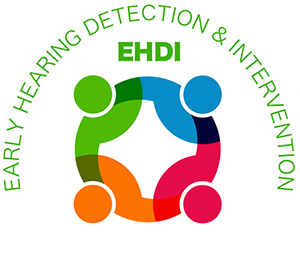Last Modified: 06/23/2023
Reaching Families on the Move: A Story from Listen and Talk in Seattle, WA
Listen and Talk, an early intervention program in Seattle, began providing tele-intervention services in 2010 as a way to increase services for families. The following story reflects their experience with TI.
Sarah was a 16-month old with bilateral hearing aids for mild-moderate hearing loss when her mother first connected with Listen and Talk. Sarah is exposed to two primary languages in the home—her mom, with whom Sarah spends most of her time, speaks primarily French, while her dad speaks primarily English. Mom’s English is good but definitely not her primary language. Sarah’s family lived in a rural area, requiring providers to travel about 60 miles one way—quite a distance.
In addition to addressing the listening and language skill development for Sarah, intervention focused on parent-child interactions and hearing aid wearing time. During the early face-to-face home visits, it was very difficult for mom to engage in play/routine activities. She was not comfortable “playing” and wanted the provider to lead the activities. Mom had difficulty describing interactions during their daily activities. Additionally, mom admittedly experienced grief over her daughter’s hearing loss, which interfered with ensuring hearing aid wearing time as well as implementation of recommended strategies and techniques.
Given the obvious need for increased family support, coaching, and audiological monitoring, Listen and Talk began tele-intervention services as a way to provide more frequent services while cutting down on driving time. Skype was used to connect the Listen and Talk provider’s office computer to the family’s computer. Both computers were laptops with built in cameras.
Shortly after enrolling in Listen and Talk, Sarah and her mom spent 2 ½ months in Montreal with the maternal grandparents. During this time, sessions were conducted weekly through Skype—services that otherwise would have been put on hold. When they returned to Seattle, they continued the services through the combination of face-to-face home visits and Skype visits.
After receiving TI services for several months, Sarah and her mom made significant changes. During TI sessions, mom was very involved, automatically sitting on the floor and engaging Sarah. She dramatically increased interaction with the provider over Skype, describing the responses that Sarah was giving that might not be heard by the interventionist. Mom also increased implementation of strategies suggested by the interventionist. Through Skype, the interventionist showed Sarah’s mom how to cut and fit new ear molds that were sent through the mail. The TI sessions also allowed Sarah’s mom to discuss emotional issues that were a priority for her, providing the interventionist with confidence that TI can allow for providing needed emotional support. Some efforts remained a challenge. Sarah still was not wearing her hearing aids consistently, however, her mom is willing to openly convey that she is wearing them for only small portions of the day but not everyday. Through TI, Sarah’s parents are working on ways that they can increase hearing aid use to build up to full time use for all waking hours. Sarah has shown significant growth in her receptive and expressive communication skills over the past few months.
Unfortunately, the TI visits with Sarah and her mom have been difficult to continue. Shortly after returning from Montreal, the family moved further away and into a “dead zone” where they are still experimenting on how to get a sufficient signal to continue with teleintervention. They continue to explore ways to overcome this issue.
The video here demonstrates the mother’s perspective about TI, explaining what she sees as the strengths and challenges.



